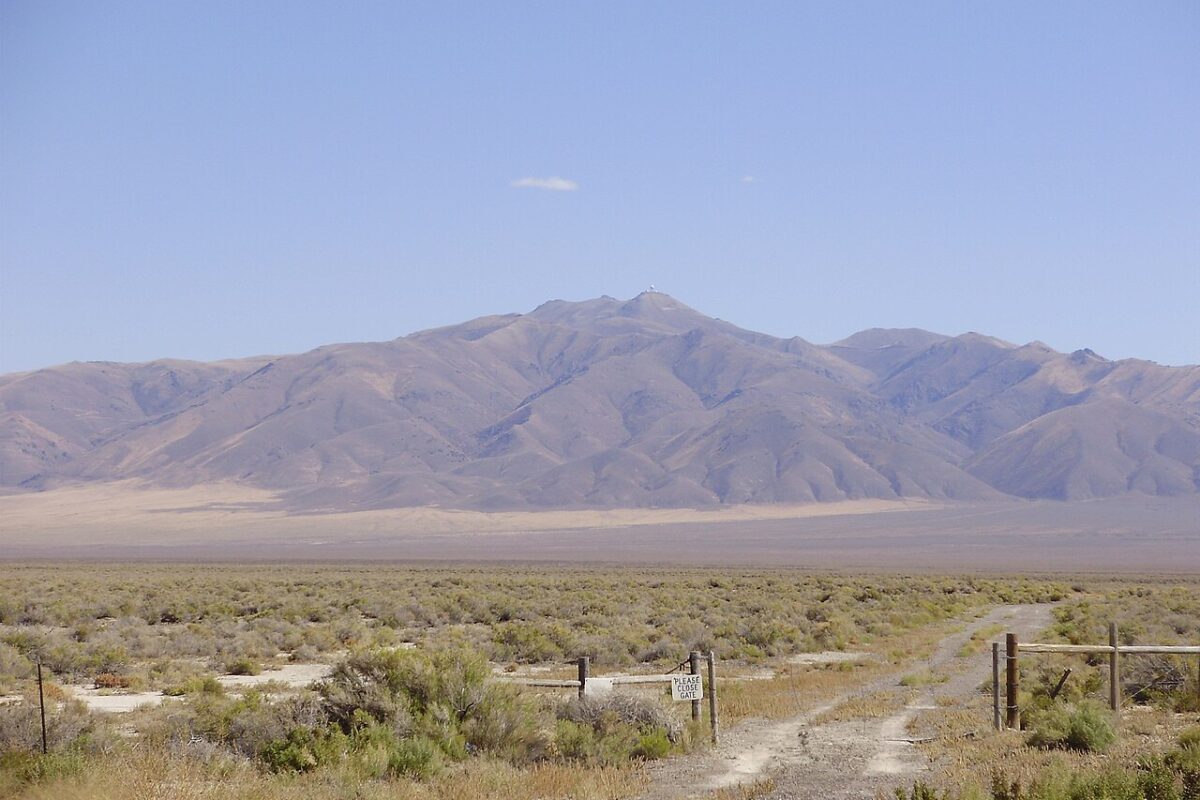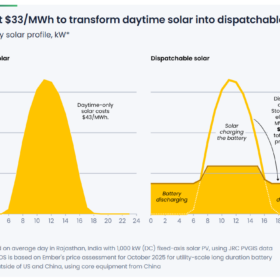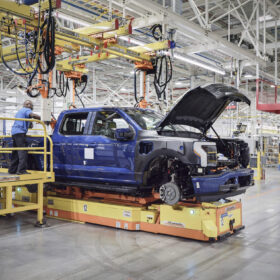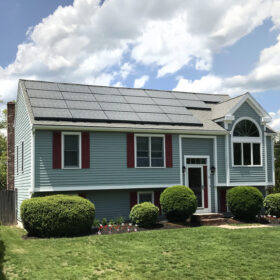The rough path of the microgrid market in California began in 2018, when the state passed Senate Bill 1339 directing the California Public Utilities Commission (CPUC) to develop a framework for commercializing microgrids.
In particular, California’s microgrid rulemaking, launched after this bill, started with quick fixes, streamlined interconnection and temporary tariffs to get projects online before the next wildfire season. It then moved to bigger structural changes, authorizing a $200 million Microgrid Incentive Program (MIP) and, for the first time, carving out an exception to the state’s long-standing “over-the-fence rule.” This rule, rooted in Public Utilities Code Section 218, traditionally prohibited one property from supplying electricity “over the fence” to another unless it was a regulated utility. By softening that restriction, regulators allowed community microgrids to share power across adjacent critical facilities, so that, for example, a hospital and a fire station next door could legally keep each other powered during an outage. However, this privilege does not extend to ordinary communities. This rule locks critical facilities and neighborhoods into dependence on investor-owned utilities, even when they already have local generation and storage in place.
This is a critical limitation, as energy sharing and trading within a local community or business complex are vital to maximizing the efficiency of microgrid systems.
In 2024, Senator Josh Becker attempted to address the issue related to the “over-the-fence” rule with his bill, SB 1374, which passed the Senate but was vetoed by California Governor Gavin Newsom.
The process also tackled economics by suspending punitive standby charges and convening a formal working group to hash out unresolved technical and valuation issues, while layering in new reliability measures during peak demand. By 2024, California had adopted a comprehensive multi-customer microgrid tariff and built the most detailed microgrid framework in the nation, yet on the ground, progress remains slow, bottlenecked by utility resistance, permitting delays, and cost disputes even as wildfire outages grow more destructive.
One of the central barriers is the role of the investor-owned utilities, particularly PG&E, Southern California Edison, and San Diego Gas & Electric. Utilities control the wires and interconnection points, which means that every community microgrid must navigate a utility approval process. These processes are lengthy, costly, and often designed to preserve utility control rather than empower local resilience. As a result, even communities eager to build clean, independent microgrids frequently face years of delay. Moreover, in many cases, implementing a microgrid project is nearly impossible due to regulatory obstacles designed to prevent utilities from losing customers, with the “over-the-fence” rule being the most significant barrier.
Utilities argue that allowing microgrids to serve multiple customers can shift costs onto others, while communities argue that the benefits of resilience, such as preventing outages for critical facilities, or keeping vulnerable populations safe: far outweigh any incremental costs. This standoff has left many proposed projects stuck in planning stages, despite clear evidence of their necessity.
The mentioned Microgrid Incentive Program, designed to support projects in disadvantaged and high-risk communities. While these are promising, the scale is still small compared to the need. Thousands of circuits remain vulnerable to Public Safety Power Shutoffs, and only a handful of microgrids have been deployed with state support under the umbrella of the utility companies.
Lessons from pilot projects
California has seen a series of pioneering microgrid projects that prove both the feasibility and value of decentralized energy, especially during natural disasters.
The Sonoma Clean Power Microgrid launched in 2020 to strengthen resilience in wildfire-prone Sonoma County. With 2.5 MW of solar and 6 MWh of battery storage, it serves about 600 customers and represents a $15 million investment. Supported by the CPUC’s Microgrid Incentive Program and additional the California Energy Commission’s Electric Program Investment Charge (EPIC) program, the project ensures uninterrupted power for residents and businesses during outages.
In Humboldt County, the Redwood Coast Airport Microgrid remains one of the state’s most celebrated. Combining 2.2 MW of solar PV and nearly 9 MWh of battery storage, it powers the airport and U.S. Coast Guard station. When a 6.4 magnitude earthquake struck in December 2022, the microgrid seamlessly kept these facilities online for 15 hours while 70,000 nearby customers lost service.
Another Humboldt project, the Blue Lake Rancheria Microgrid, has become a national model. Since 2017 it has provided renewable power and emergency backup for tribal government buildings, a hotel, and an emergency shelter. During the 2019 Public Safety Power Shutoffs, it served as a refuge for residents left in the dark for days.
Further inland, the Tehachapi Microgrid was completed in 2021 to serve about 500 customers in a rural community often hit by wind and fire-driven outages. With 3 MW of solar and storage capacity, backed by MIP and EPIC funds, it enables the community to operate autonomously when grid failures strike.
Urban areas are also adopting the model. The Los Angeles County Emergency Microgrid Project, completed in 2023, deploys 5 MW of solar and batteries to support 2,000 customers, including hospitals, schools, and fire stations. Investment – $25 million.
Momentum is now accelerating. In 2025, PG&E announced $43 million in new MIP grant awards for nine community microgrids across Northern and Central California. These projects will serve nearly 9,000 customers, many in disadvantaged and tribal communities.
I would like to note that tribal leadership is central to this microgrid wave in California. The Tribal Energy Resilience and Sovereignty (TERAS) initiative, led by Hoopa, Karuk, Yurok, and Blue Lake Rancheria tribes, is building a network of “nested” microgrids. Supported by the California Energy Commission, Redwood Coast Energy Authority, and U.S. DOE, TERAS aims to demonstrate community-owned, clean energy systems as a blueprint for wider adoption.
Meanwhile, construction is underway on the Calistoga Resiliency Center in Napa Valley. Designed with long-duration battery and hydrogen fuel cell storage, it will provide 8.5 MW of capacity and up to 48 hours of backup during Public Safety Power Shutoffs. This hybrid design represents the next frontier in multi-day community resilience.
But it’s worth underscoring that every one of the projects highlighted so far has been built with utility participation with fundings provided by the state. When a community tries to go it alone, the path is essentially blocked: funding is inaccessible, and the maze of regulatory barriers, led by the infamous “over-the-fence” rule, makes independent projects nearly impossible. But…
Beyond the Fence
A blockchain-based framework could change this equation. By tokenizing units of energy, transactions inside a microgrid could be recorded and exchanged securely without triggering traditional financial transfers that utilities and regulators treat as “sales.”
In practice, this means that energy consumers on neighboring parcels could share power during an outage – settling accounts digitally through blockchain tokens – without violating the “over-the-fence” rule.
Beyond the legal workaround, blockchain offers added advantages: transparent records of energy flows, automated enforcement of service standards through smart contracts, and integration with renewable assets like solar and batteries. At scale, such systems could enable networks of resilient, community-led microgrids that bypass the slow approval processes of investor-owned utilities.
I would like to remind, that the Brooklyn Microgrid project was one of the first of its kind – it began as a test project in 2016 in Park Slope by LO3 Energy to enable solar homeowners to trade electricity among themselves. Though it faced heavy regulatory limits (especially rules that only utilities or retail service providers can buy and sell electricity), it proved that blockchain-enabled local energy trading is not only possible – it’s powerful. The regulatory sandbox framework helped LO3 bypass some restrictions, but expansion stalled due to pushback from utilities and ambiguous energy laws that didn’t clearly allow peer-to-peer sales.
For California, which already leads on climate policy but lags on microgrid deployment, this approach could provide a pathway to align innovation with regulation. By creating a regulatory sandbox for blockchain-enabled microgrids, policymakers could test new models that unlock resilience for disadvantaged and high-risk communities – without waiting years for utilities to sign off.
Such an initiative, along with draft legislative proposals, I presented as a consultant to the Office of Senator Henry Stern (California) in June, and I hope that a state-level pilot project for a blockchain-based microgrid will come to life in the near future.
I would like to finish on some optimistic note. Two weeks ago, California Gov. Gavin Newsom signed a package of energy bills into law that seeks to address rising energy costs, wildfire mitigation and climate funding.
In particular, bill AB 825 opens California to a broader Western market, expanding access to balancing and ancillary services, so microgrids can monetize flexibility more often and at higher certainty.
SB 254 tightens utility accountability for wildfire safety and spending, steering grid investments toward lower-cost non-wires alternatives where community and commercial microgrids pencil out. Together, they thicken the revenue stack (resource adequacy, ancillary, time-of-use rates arbitrage, resilience), stabilize retail costs, and make microgrid business cases clearer for customers and financiers. They also ease procurement: aggregated microgrids/virtual power plants can be contracted and settled against standardized baselines instead of bespoke deals. The near-term catalyst is implementation by CAISO/CPUC – standard telemetry, eligibility, and settlement rules that let portfolios qualify at scale.
With those rules in place, we can expect faster deployment across high-risk feeders, critical facilities, and commercial campuses statewide.
Vitaliy Daviy is the CEO of IBCentre, a clean-energy market and events leader, and Policy Director at the Sustainable Innovation Council. He advises the Office of Senator Henry Stern (California) on microgrids and virtual power plants. Over 15 years, he has helped catalyze multi-country solar and storage deployment and several billion dollars in clean-energy investment. Based in the Bay Area, he focuses on policy design, program finance, and equitable deployment.
The views and opinions expressed in this article are the author’s own, and do not necessarily reflect those held by pv magazine.
This content is protected by copyright and may not be reused. If you want to cooperate with us and would like to reuse some of our content, please contact: editors@pv-magazine.com.








Reading on this subject, explained more and more interconnectingly at PV Magazine, is like not being allowed to start a driving trip, until after dark, having to do night driving, and then, the light starts getting better and better. Thank you for this information.